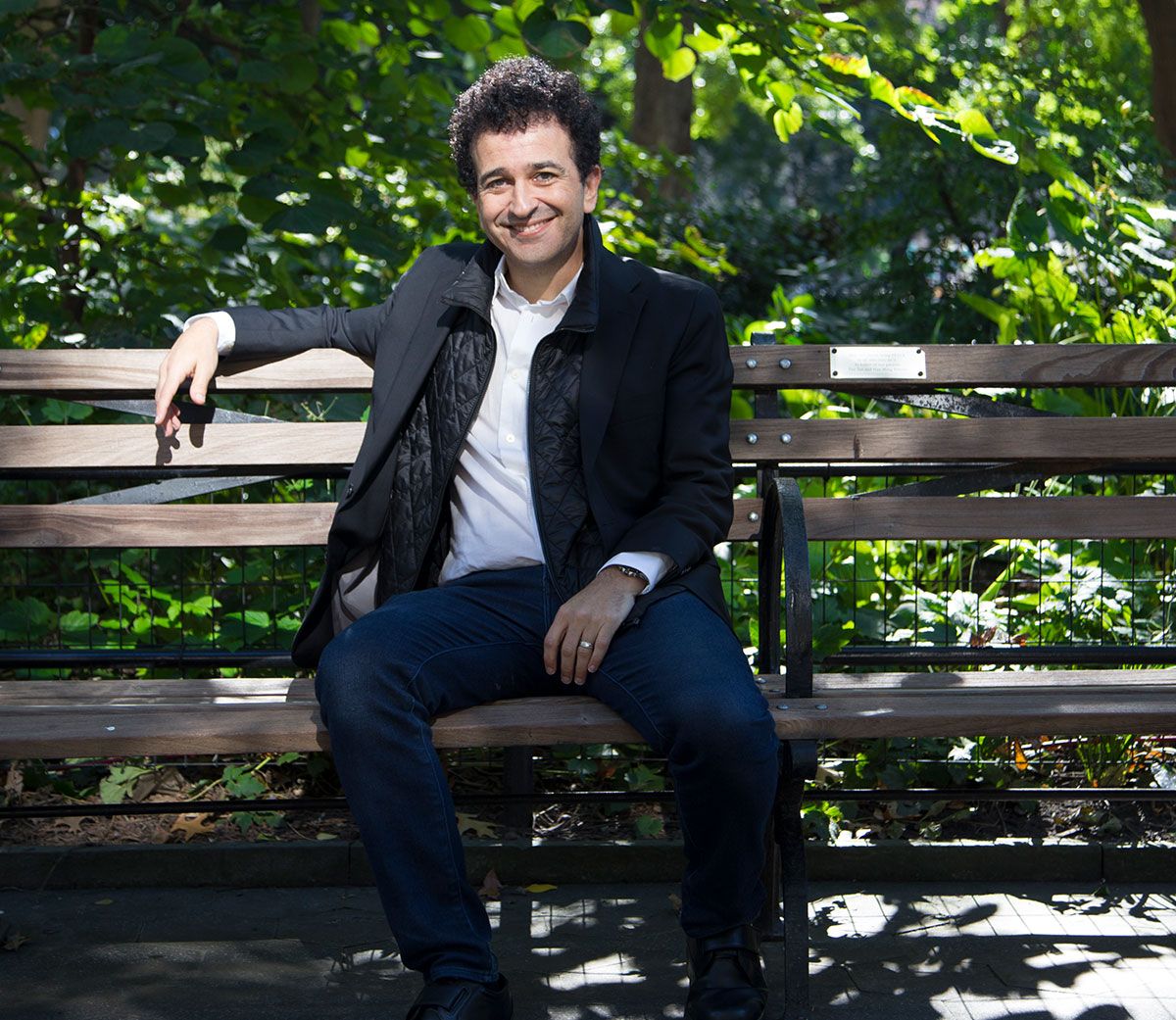Chase the Anomalies to Find the Big Ideas, Advises Keynoter Bahcall
In his keynote at the annual meeting of the American Academy of Dermatology Association Safi R. Bahcall, Ph.D., a physicist and entrepreneur, spoke about how seemingly crazy ideas can lead to breakthroughs.
Breakthroughs — in science, medicine and business — don’t come from some brilliant strategy, according to Safi R. Bahcall.
They come from the hunt for the most surprising, nonobvious customer insights, said Bahcall, Ph.D., a physicist and entrepreneur, in a keynote presentation today at the annual meeting of the American Academy of Dermatology, which is being held in New Orleans.
Safi R. Bahcall, Ph.D.

“Chasing anomalies is the key to big ideas,” he said. “In my view, the really big ideas and breakthroughs that change the course of science, business or medicine are about chasing an anomaly.”
Bahcall is the author of the book "Loonshots: Imagining the Impossible." He said loonshots are often the crazy ideas that challenge the old ways of doing things or seeing things. They are often found in the anomalies, the things that don’t quite align with our traditional way we think the world works. Those who are curious — and those willing to endure the controversy and sometime ridicule — and who are willing to understand the anomalies are the people who are likely to come with the next great idea.
In his keynote, Bahcall recalled Judah Folkman, M.D., a cancer researcher who is considered the father of angiogenesis. While as a navy doctor and then later when he was with Boston Children’s in the 1960s, Folkman noticed that some cancer tumors would stop growing — the anomaly. He hypothesized that cells “signal” other cells. For cancer, he suggested that that tumor cells create signals to bring in nutrients to develop new blood vessels that allow it to continue to grow. He also suggested this pathway could be disrupted for treating cancer.
In 1971, he published this hypothesis in the New England Journal of Medicine. At that time, radiation and chemotherapy were the standards of care in cancer treatment.
“The reaction in the broad medical community was ‘what are you talking about? What is the cell signaling stuff?,’” said Bahcall, who worked with Folkman for seven years. “He was ridiculed and asked to leave the board of the Children’s Hospital. Judah used to say, ‘I will get up to the podium like I just did. And it was as if everybody had to go to the bathroom.’”
Today, it is now widely understood that tumor growth is dependent on this process of angiogenesis. And angiogenesis inhibitors are available to treat many cancers, including multiple myeloma, breast, kidney and brain cancer, among others.
Cell signaling pathway is now part of dermatology research. Today, medications that address the Janus kinase 1 (JAK1) pathway are available for skin condition, both as systemic and topical treatments.
In September 2021, the FDa approved the first JAK inhibitor, Opzelura (ruxolitinib), to treat a skin condition. It is now approved to treat patients with mild-to-moderate eczema and vitiligo. Other JAK inhibitors include the orals Cibinqo (abrocitinib) to treat patients moderate-to-severe atopic dermatitis, Rinvoq (upadacitinib) to treat proved to treat eczema and psoriatic arthritis, and Xeljanz (tofacitinib) to treat psoriatic arthritis.
“It seems very likely that dermatology practice 10 years from now, we’ll be going to see a revolution just like in cancer,” he said. “Future breakthroughs don't come from some brilliant strategy; they come from the hunt for anomaly.”
Phase 3 Trials of Oral Povorcitinib Show Positive Results in Hidradenitis Suppurativa
March 24th 2025A new drug application for povorcitinib is expected to be filed in late 2025 to early 2026 to treat adult patients with moderate to severe hidradenitis suppurativa, a chronic and painful inflammatory skin condition.
Read More
Opzelura May Reduce Need for Other Treatments in Atopic Dermatitis | AAD 2025
March 11th 2025Patients with atopic dermatitis who had not received biologics prior to treatment with Opzelura were able to avoid biologics during the 12 months after treatment with the topical nonsteroidal, according to study findings presented at the 2025 American Academy of Dermatology annual meeting.
Read More
Makeup and Skin Care Products Contain 'Forever Chemicals' | AAD 2025
March 10th 2025More than 200 products from 28 makeup, sunscreen, and shaving cream brands contained Teflon and other forever chemicals, according to a new study presented at the American Academy of Dermatology annual meeting.
Read More
Study Finds Opzelura Used As-Needed Improves Quality of Life | AAD 2025
March 10th 2025The reduction in itch was the greatest contributor to quality-of-life improvement for adolescents and adults with atopic dermatitis, according to a new study presented at the American Academy of Dermatology annual meeting.
Read More